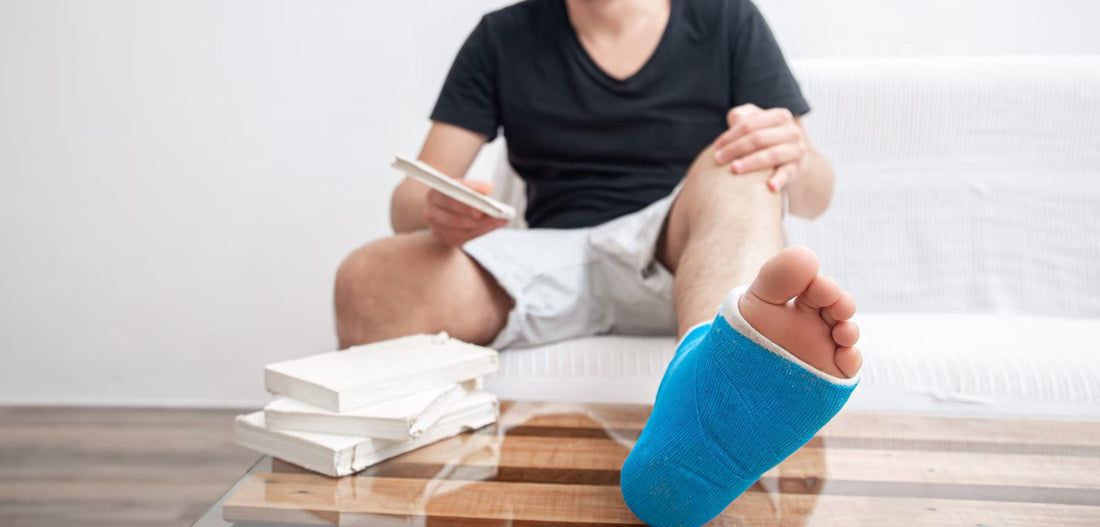
4 Plantar Fasciitis medical devices
Share
Introduction
Plantar fasciitis often causes intense foot pain in the morning when getting out of bed or after sitting for a long time. The pain usually develops gradually and is not linked to a specific injury. It tends to improve when walking but worsens at night after a day of activity.

Medical professionals and physiotherapists will suggest starting with non-invasive treatments to reduce pain and address issues with foot alignment and movement. To address these concerns, they may recommend using external devices on a daily basis. Here are some examples of these devices:
-
Night Splints: Due to the tightening of your fascia overnight, healthcare professionals may suggest using night splints to alleviate morning stiffness and pain. These orthotic devices are designed to stretch the Achilles tendon, calf muscles, and fascia while you sleep. Typically, they are recommended for a duration of 1 to 3 months. Ideally, the splints should be worn throughout the night; however, this can often be impractical and uncomfortable, requiring an adjustment period. Alternatively, if worn for shorter periods of 15 to 30 minutes multiple times a day, they can still have a similar effect. It is important to note that the splints need to be worn consistently for a significant period before experiencing any noticeable benefits.
-
Walking Boots and Casts: In cases where the pain persists, it may be necessary to immobilize the heel. This can be achieved through the use of a plaster cast or a removable boot, typically for a period of up to 6 weeks. A walking boot is a specific type of brace that is worn on the foot and ankle to provide support and stability, effectively unloading the plantar fascia and facilitating the healing process. Compared to casts, walking boots offer certain advantages. They are easier to put on and remove, which helps prevent skin damage. This feature can be particularly beneficial for individuals with an active lifestyle or jobs that involve prolonged standing or walking.
-
Customized Insoles: Customized insoles are specifically designed to correct your foot position and biomechanics. They can be conveniently inserted into your shoes. These insoles are tailored to meet the unique needs of your feet and often include padding or shock-absorbing material in the heel area. They also provide arch support, which helps reduce the strain on the plantar fascia, thereby addressing one of the contributing factors to the development of plantar fasciitis. By using properly selected insoles, the distribution of weight on the foot can be optimized, promoting better foot alignment and function.
-
Heel pads: Heel pads are a highly effective tool that can offer immediate relief from the symptoms of plantar fasciitis. These pads are specifically designed to alleviate pressure on the sensitive heel area, providing cushioning and support. They can be easily inserted into standard shoes, thereby reducing the impact of walking and minimizing the strain on the plantar fascia. By redistributing the forces exerted on the heel, heel pads help to alleviate discomfort and promote a more comfortable walking experience. They are a convenient and practical solution for individuals seeking immediate relief from the pain associated with plantar fasciitis.

Conclusion
In conclusion, it is crucial to consult with a doctor or a physiotherapist before selecting any of these devices for your feet. Their expertise will guide you in understanding the specific requirements of your feet and identifying the underlying causes of plantar fasciitis. By working closely with healthcare professionals, you can make informed decisions and choose the most suitable orthotic interventions to aid in your recovery. With the proper tools and guidance, you can effectively address plantar fasciitis and improve your foot health.
Author Bio

Inês Pinheiro
Certified Physiotherapist for Shoulder and Knee Injuries
Inês is a skilled physical therapist with a special interest and extensive experience in working with athletes, specifically football players and also neurologic patients.
References
- Heel Pain and Plantar Fasciitis (no date) Cambridge Foot and Ankle Clinic. Available at: https://cambridgefootandankle.com/ (Accessed: 22 May 2023).
- ChaGPT (no date) Introducing ChatGPT. Available at: https://openai.com/blog/chatgpt (Accessed: 22 May 2023).
- (No date) EPRA International Journal of Research & Development (IJRD) [Preprint]. doi:10.36713/epra2016.
- Exercises for plantar fasciitis (no date) NHS choices. Available at: https://www.royalberkshire.nhs.uk/ (Accessed: 22 May 2023).













